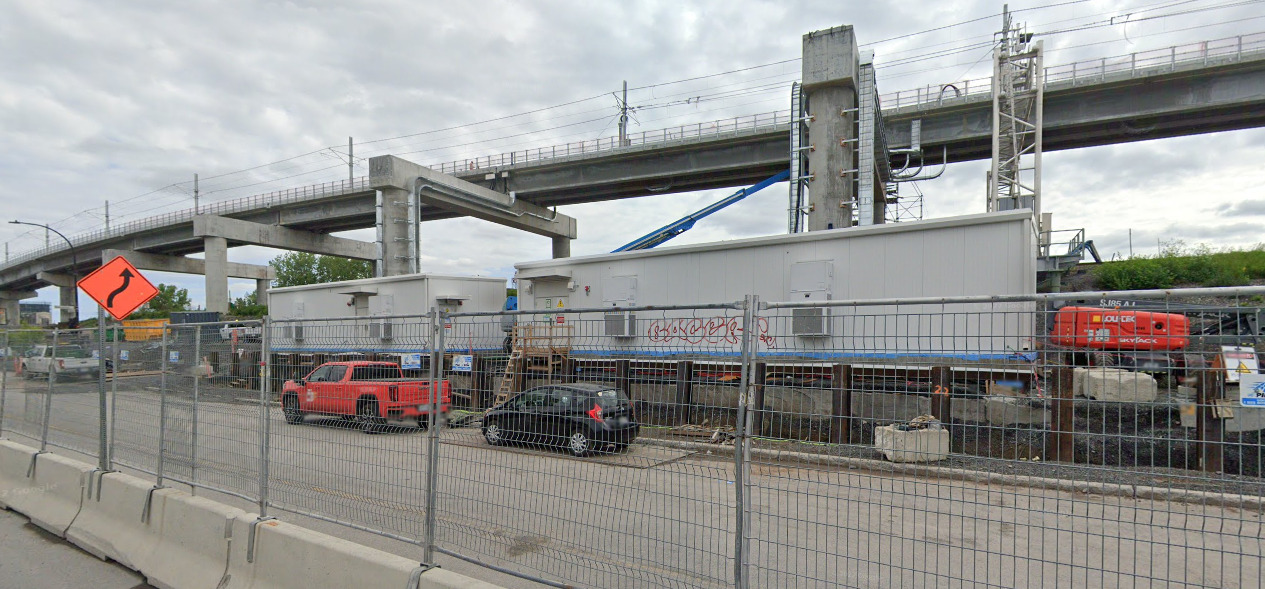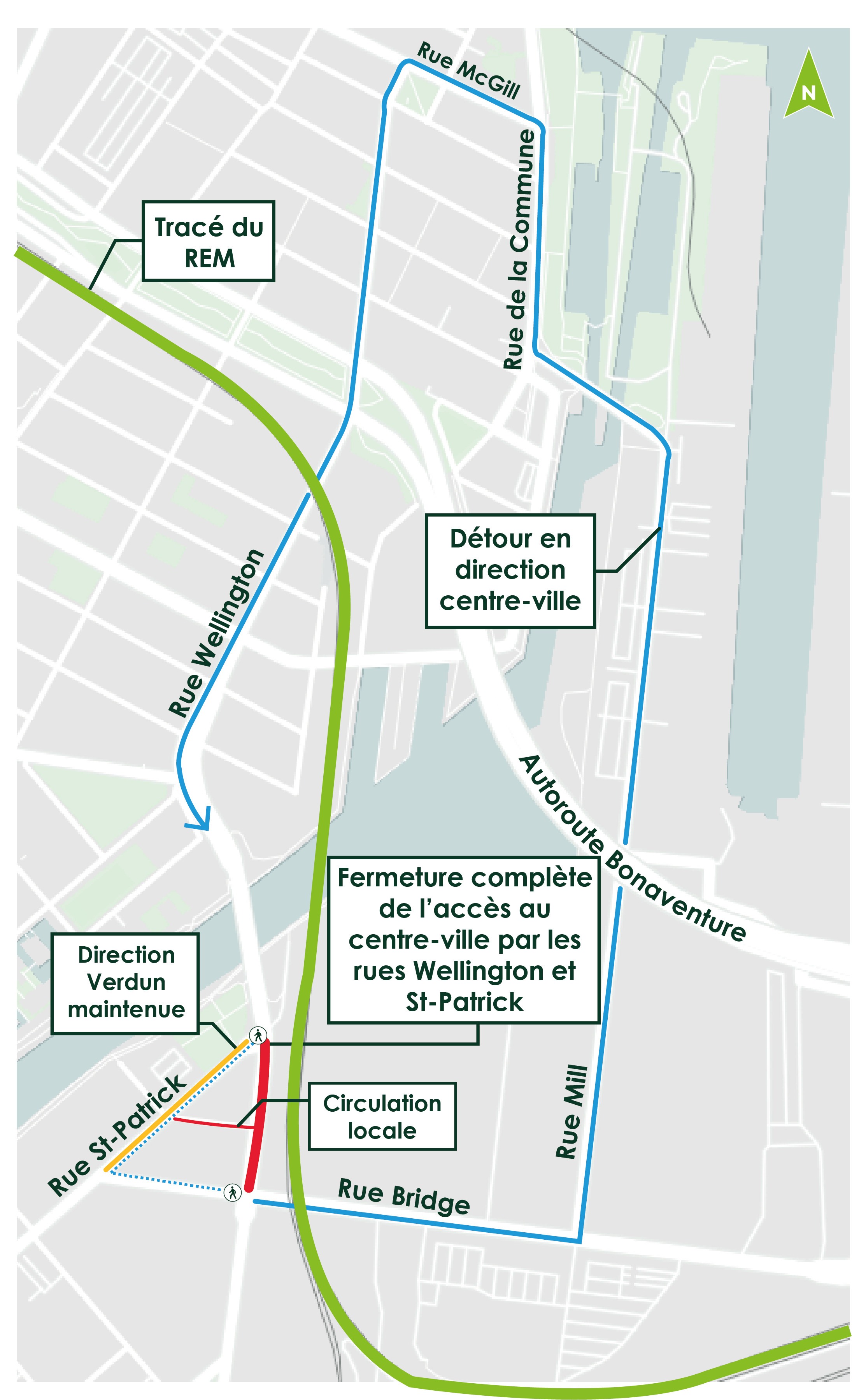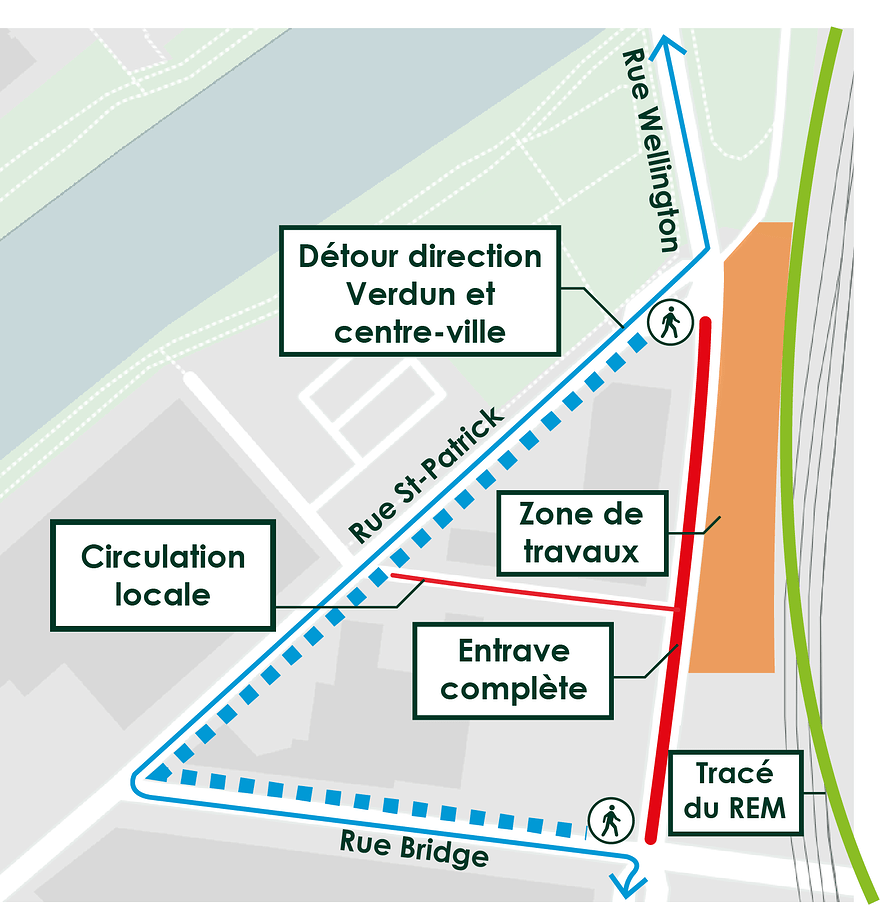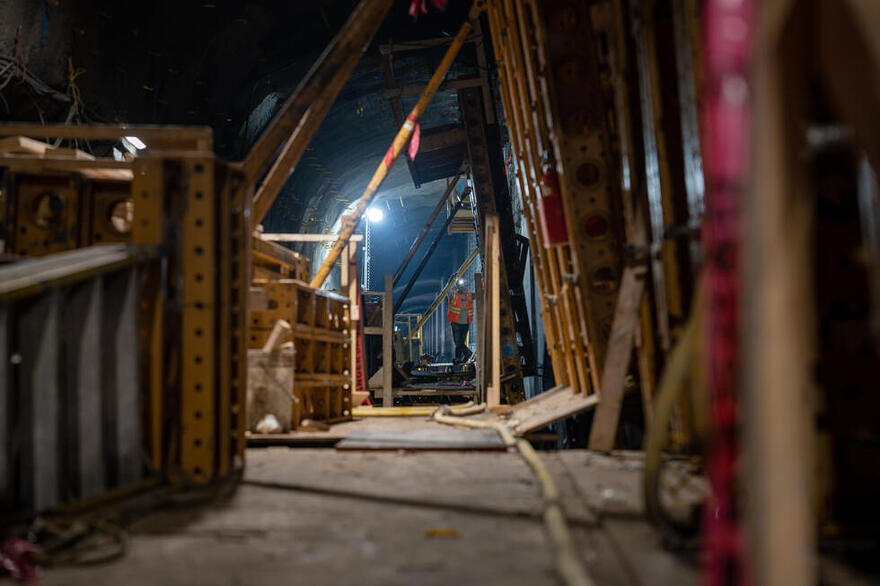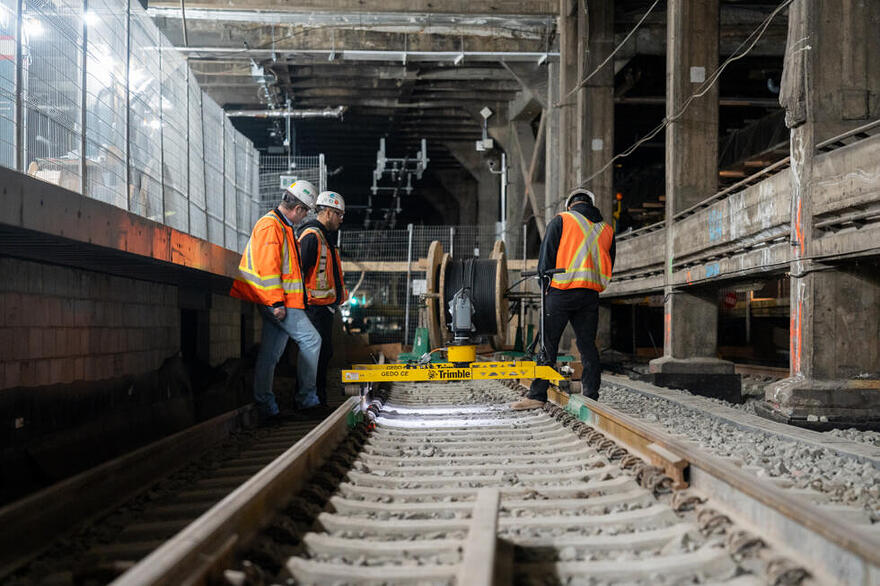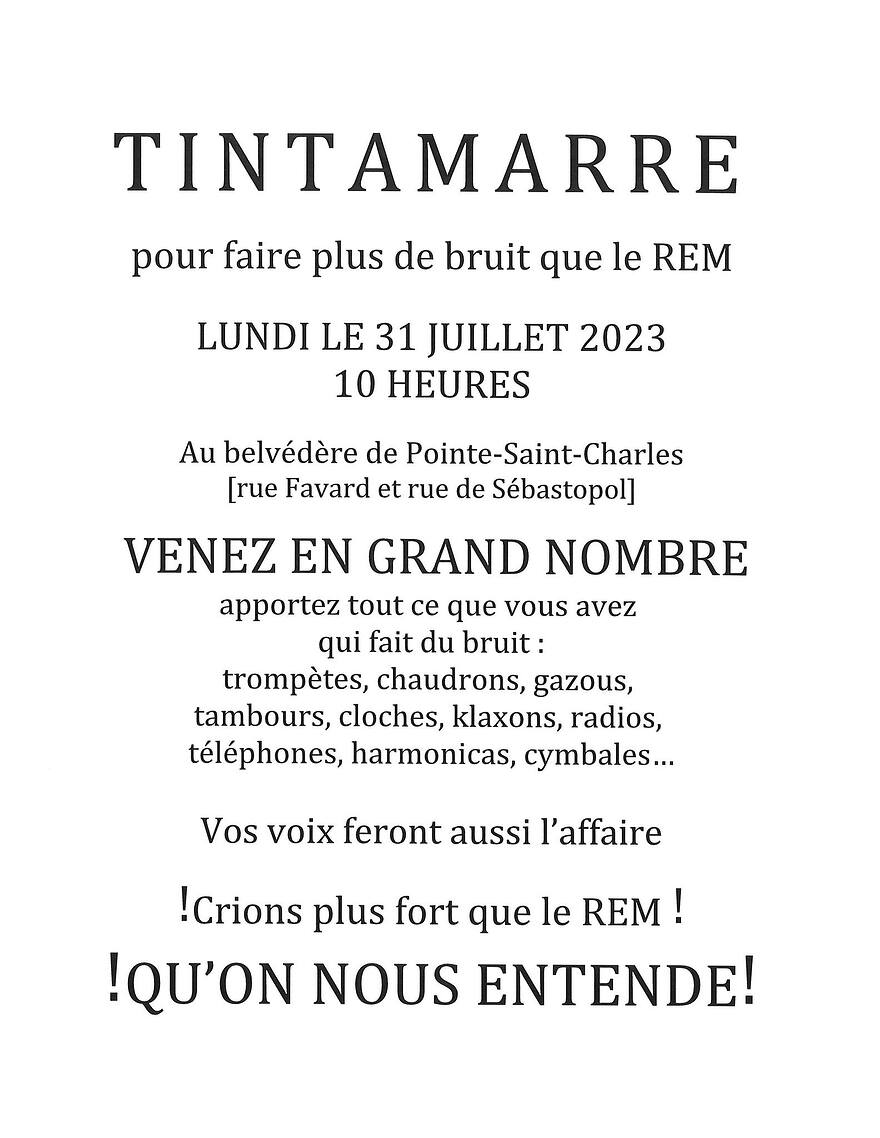The lines on the Champlain bridge have been repainted and moved over, as the barriers around Île des Sœurs station have been removed finally. The live camera was down when this change was made, but you can see it now:
It’s about time they got it done.
C’est plus fluide, d’ailleurs. Je suis passé hier soir. J’étais dans la voie de gauche et j’ai été surpris de constater que je n’avais pas à changer de voie une fois passée la station. La configuration pendant les travaux obligeait tout le monde à se décaler d’une voie, c’était une cause de congestion ou de ralentissement quand le volume de circulation était élevé.
Je pensais exactement la même chose. Penses tu qu’il y a un lien?
I think it’s just them finally covering the substation that’s there
The North sidewalk has been removed a couple of weeks ago.
I was wondering why it was called a substation, when it was so visible above ground… and it looks like a bunch of shippng containers
I like these Toronto Hydro substations
la circulation automobile va être difficile
Réfection de la rue Wellington – Fermeture complète d’une portion de la rue Wellington entre la rue Saint-Patrick et la rue Bridge
ROUTIÈRE | MAJEURE
À partir du 26 juin 2023 jusqu’au début septembre 2023
Centre-ville
Nature des travaux
En raison des travaux de réaménagement de la rue Wellington, une fermeture complète sera nécessaire. Cette entrave permettra également de procéder à la reconfiguration de la rue, avec l’intégration d’une piste cyclable bidirectionnelle et de nouveaux trottoirs.
Cette entrave aura lieu à partir de la fin juin 2023 entre les rues Saint-Patrick et Bridge, et restera en place jusqu’à début septembre.
À noter que d’autres phasages de travaux auront lieu par la suite, et pour lesquels d’autres communications suivront.
Impacts et mesures d’atténuation
-
Circulation du 26 juin au 9 juillet 2023 :
-
Rue Wellington, entre la rue Saint-Patrick et Bridge : complètement fermée à la circulation automobile et piétonne.
- Détours automobiles:
- Via la rue Bridge et la rue Mill pour se rendre au centre-ville
- Via la rue Saint-Patrick et Bridge en direction de Verdun
- Détour piétons: via la rue Bridge et la rue Saint-Patrick pour rejoindre la rue Wellington.
- Détours automobiles:
- Rue St-Patrick, entre la rue Wellington et Bridge : circulation maintenue à sens unique en direction ouest.
- Rue St-Columban, entre la rue Saint-Patrick et Wellington : circulation locale
-
Rue Wellington, entre la rue Saint-Patrick et Bridge : complètement fermée à la circulation automobile et piétonne.
La carte ci-dessous illustre les détours mis en place pendant cette période :
Circulation du 10 juillet à septembre 2023 :
-
Rue Wellington, entre la rue Saint-Patrick et Bridge : complètement fermée à la circulation automobile et piétonne.
- Détour automobile : via la rue Bridge et la rue Saint-Patrick pour aller et revenir du centre-ville
- Détour piétons : via la rue Bridge et la rue Saint-Patrick pour rejoindre la rue Wellington.
- Rue Saint-Patrick, entre la rue Wellington et Bridge : réouverture à la circulation dans les deux sens.
- Rue Saint-Columban, entre la rue Saint-Patrick et Wellington : circulation locale
La carte ci-dessous illustre les détours mis en place pendant cette période :
Carte illustrant les détours en place à cette période- Du bruit, de la poussière et des vibrations pourraient être engendrés par ces travaux. Afin d’assurer le respect des critères auxquels le projet est assujetti, un suivi sera effectué par des experts en environnement.
- L’accès aux commerces et entreprises du secteur sera maintenu en tout temps
*Dates sujettes à changement
Un avant gout de l’interdiction des camions sur la rue Wellington au niveau de Griffintown. Les piétons vont en profiter d’une rue paisible pour quelques jours ![]()
Réseau des bus: “Détour en cour” exit la ponctualité! De toute façon cette année je vais être surpris si nous somme au dessus de 75% dans la norme de service de -1 + 3 minutes dans les heures de passage. Tellement d’entrave partout.
Nouvelles photos partagées par NouvLR des travaux dans le tunnel Mont-Royal:
Hiver 2023
Printemps 2023
We have (at least) one substation on that model in Montreal: This old Victorian home has a secret: it's part of the Montreal Metro system | CBC News
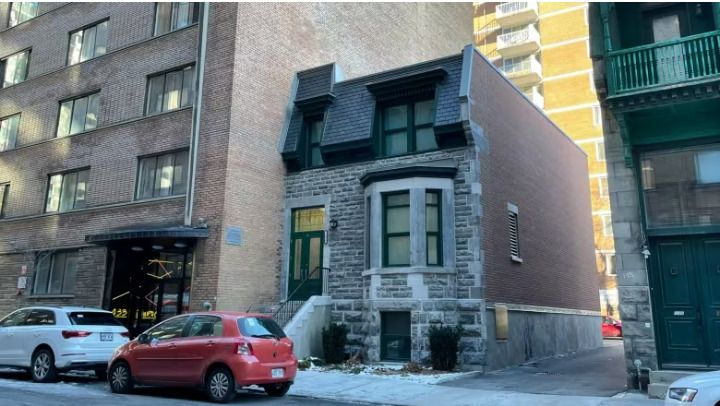
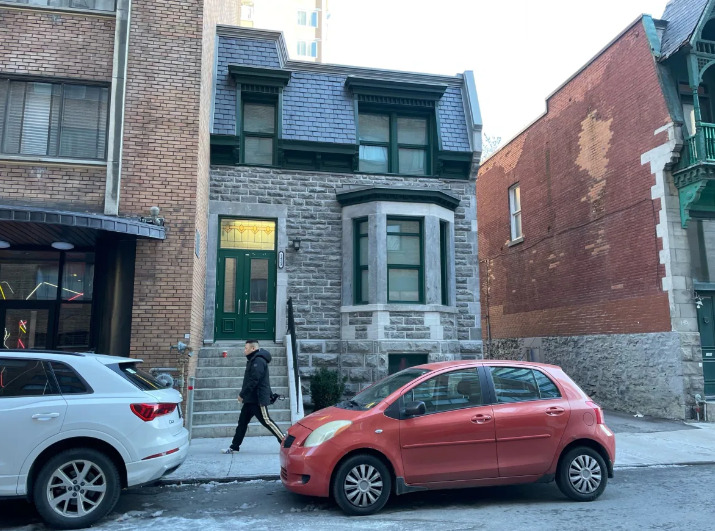
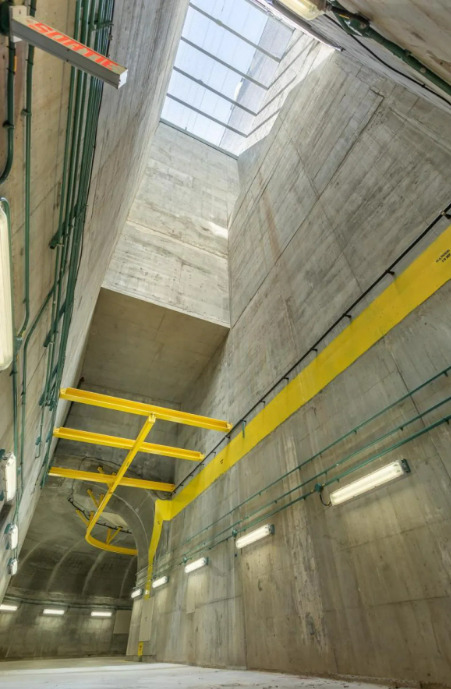
Oh I really like these fake buildings that hide technical/equipment rooms. Paris has several of them, you wouldn’t know that it is just a facade… Which brings me to the case of the 40 highway on its elevated portion. Wouldn’t be cool that they’d build a fake facade looking like Montreal’s most characteristic hometown/triplex as a sound proof barrier?
I think you just found Montreal’s superheroes headquarters ![]()
La personne interviewé pour l’article habite au 9e étage dans un immeuble de la rue Smith. Clairement, il est trop haut pour que les murs antibruit fonctionnent pour lui.
Pour les absorbeurs additionnels, il me semble que qu’ils sont installés sur la partie à l’ouest de la tour Wellington… ![]()
Bad vibrations: Griffintown neighbours want the REM to pipe down
He wears earplugs, turns a fan on full blast and covers his head with a pillow, but Drew Kuzminski can still hear the rattling and screeching noise of trains when he’s trying to get to sleep.
Jason Magder • Montreal Gazette
Published Jul 25, 2023 • Last updated 2 hours ago • 4 minute read

Drew Kuzminski watches a REM train go by his condo in the Griffintown area of Montreal on Wednesday, July 19, 2023. PHOTO BY JOHN KENNEY /Montreal Gazette
He wears earplugs, turns a fan on full blast for white noise and covers his head with a pillow, but Drew Kuzminski can still hear the rattling and screeching of trains at night.
‘It’s like a plane is approaching’ when REM goes by
He can also feel their vibrations in his bedroom.
“It sounds like an airplane approaching and then departing every time it passes by,” Kuzminski said. “Beyond what I’ve already done, I’m not sure what else I can do to offset the sound. It’s been quite a disruptive thing, and I’ve had a lot of trouble getting restful sleep.”
Kuzminski lives on the ninth floor of a condo on Smith St. overlooking the Peel Basin in Griffintown; a narrow cobblestone street separates his building from the elevated track on which the new Réseau express métropolitain runs. The light-rail automated train is scheduled to come into service July 31, with the first branch running from downtown’s Central Station to Brossard. Since tests ramped up late last month, trains have been rolling on their normal schedule of 20 hours per day. The only respite comes between around 1 and 5:30 a.m., when the trains are not scheduled to run.
Kuzminski bought his condo four years ago because he loved the view of the canal, the Five Roses sign and the long-distance view stretching to the Champlain Bridge. At the time, there were occasional trains from the Exo commuter lines and Via Rail, running just a few times per day, and hardly ever at night. Until the REM started its tests, he never had a problem sleeping because of noise.
Now, the REM trains are louder and zoom by his condo roughly every four minutes. Kuzminski and fellow building residents have written letters and signed petitions, asking the builders of the REM to attenuate the noise from trains. They have also appealed to their city councillor.
Using a noise-measuring app on his cellphone, Kuzminski has determined the trains roll by at a noise level ranging from 75 to 100 decibels. That’s louder than the other trains coming through the area, and far higher than the 55 decibels recommended by the World Health Organization. Above that level, exposure can cause stress, affect mental health, and contribute to developing health issues such as high blood pressure. Sleep deprivation has similar health consequences.
Speaking to the Montreal Gazette last week, Craig Sauvé, the independent city councillor for the area, said the noise level is far too high for residents of Griffintown, and Pointe-St-Charles across the canal. He has received numerous complaints.
“It’s worrisome that it’s going over the WHO norms for serious health effects,” Sauvé said. “While I’m excited for the REM, this particular aspect worries me for the health of the residents in the neighbourhood.
“In the places it (surpasses) the health norms, something absolutely has to be done.”
Sauvé said he’s surprised the noise from the trains is so disruptive, since these are light trains with nearly silent electric motors. He said he has received hardly any complaints about the Exo or Via Rail trains.
In a written statement, REM spokesperson Emmanuelle Rouillard-Moreau said builders agree the noise from the trains is far too loud.
“We are not satisfied with the current situation in many areas,” Rouillard-Moreau wrote. “We are already taking action to improve it as much as possible and provide a quality transportation system. We have launched the design of additional noise barriers, will shortly be installing dynamic absorbers along 240 metres of the route to test their effectiveness, and have already pre-ordered others to cover all the problem areas. Our aim is to have detailed analyses, solutions and deployment schedules before commissioning.”
The REM’s noise levels are also raising concerns on the other side of the Mount Royal tunnel, where trains are slated to run even more often when the entire line is up and running. The REM’s four branches — to the South Shore, Deux-Montagnes, Ste-Anne-de-Bellevue and Trudeau airport — will all be running through the tunnel. Plans call for 550 train trips per day on those tracks by 2027, when the REM is expected to be fully up and running. The tunnel is expected to be reopened for the Deux-Montagnes and Ste-Anne-de-Bellevue branches by the end of next year.
When conceived more than a century ago, Town of Mount Royal was built around the idea of transit-oriented development. However, when the Deux-Montagnes commuter train line was halted, there were only 61 daily trains.
When the REM was in the planning stages, then-mayor Philippe Roy asked builders to dig down and build the tracks in a trench to cut down on noise levels, but was told that would be too expensive. At the time, REM spokesperson Jean-Vincent Lacroix said because the trains are electric and light, they would likely be less noisy.
Current T.M.R. Mayor Peter Malouf said the complaints aired by Griffintown residents are an alarm bell for his residents, because in many cases, homes in T.M.R. are located closer to the tracks.
T.M.R. passed a resolution in a recent council meeting calling on CDPQ Infra — the branch of the Caisse de dépôt et placement du Québec building the project — to come up with a way to mitigate noise and visual pollution.
“It’s not about expense; it’s about taking care of the public and being a good neighbour,” Malouf said.
He added that for residents living next to the tracks, it’s not pleasant to see the trains whizzing by every two minutes, so he’d like CDPQ Infra to also address those concerns.
Malouf said T.M.R. has reached out numerous times to CDPQ Infra, and has received mostly short, prepared statements.
“The response from them has been next to nothing,” Malouf said. “I think what they’re doing is wrong.”
Rouillard-Moreau did not respond when asked what builders are doing to address the noise and visual pollution concerns raised by T.M.R.
That’s nothing close to what an airplane approaching and departing sounds like…
Can’t imagine hearing the train screeching on Smith, maybe he’s so high up that he hears it all the way from the Costco.
“The response from them has been next to nothing,” Malouf said. “I think what they’re doing is wrong.”
That’s rich coming from the mayor letting an outdated, massive, single-use commercial project move forward without any residential or integrated transit component next to the most congested area in the city, and opposing the mixed use redevelopment of the huge strip mall next to Acadie station.
Peter Malouf, Tim Thomas, and Luis Miranda are just the worst Montreal mayors. At least, with the natural order of things being what it is, they shouldn’t here for too long.
The planes over Parc Jarry are louder than the REM lol
No trains have even run on these tracks, why are we insisting we need to mitigate noise already? Not only are the tracks straight, but they’ve also been improved since the DM train was shut down, and the tracks at this point are on ballast which (as I understand from my colleagues who’ve worked in railway) are quieter by some margin. Let’s get some trains running, measure the noise in the early stages of test, and if need be, apply measures before testing ramps up.
The situation in Griffintown is not a 1:1 comparison with TMR…
Pendant un bon moment, je ne comprenais pas pourquoi certains trouvaient que le REM était si fort, puisque chaque fois que je l’entendais, je le trouvais très correcte. Que ce soit à l’IDS ou même en étant sur le pont Wellington au dessus du canal, le son me paraissait très raisonnable et peu dérangeant.
Cependant, je l’ai entendu une fois dans PSC, en étant sur Wellington entre Centre et Bridge, et il était vraiment plus fort que les autres fois que je l’ai entendu. Probablement que la façon dont le son intéragissait avec cet environnement (container de métal + rebondissement sur la façade d’un bâtiment), amplifiait son son, mais je pense mieux comprendre que certains résidents ressentent un son fort.
Toutefois, je suis d’avis que d’habiter sur le bord de voies ferrées implique un environnement plus sonore. Pour dormir très souvent dans VSL, directement en dessous des avions atterissant (ils font de l’ombre dans le logement en me survolant), on s’habitue très vite à vivre avec (y compris dormir). Surtout, je n’ai jamais entendu le REM être autant bruyant qu’un avion, ça c’est vraiment une exagération.
Je dois avouer que quand c’est au point d’avoir des problèmes de sommeil c’est assez inquiétant, et un impact grave sur la santé. En regardant la rue Smith je vois une partie du problème, on a un environnement entièrement minéral, avant un mur d’immeubles parallèles au rails. Je m’y connais pas en design sonore mais à vue de nez ça m’a l’air parfait pour réverbèrer le bruit.
Également je parierais qu’il y a une qualité de merde sur l’isolation sonore du bâtiment, ça devrait juste pas être autant bruyant en intérieur.
ACTION CITOYENNE!
On vous invite à vous manifester contre le bruit du REM!
Organisé par des citoyennes et citoyens du quartier!
